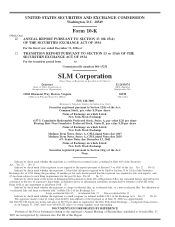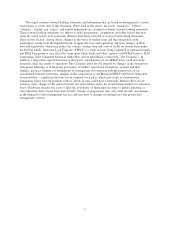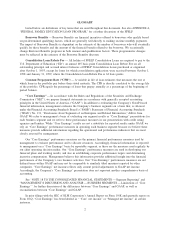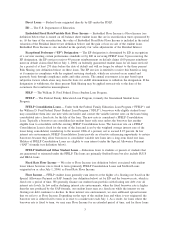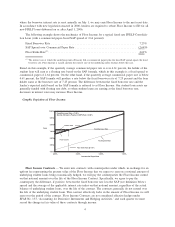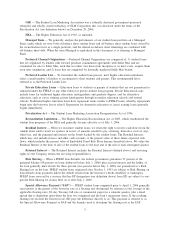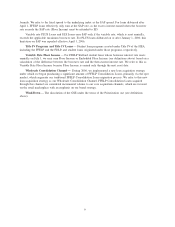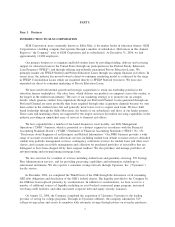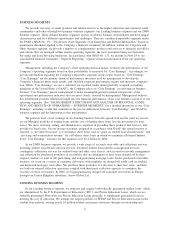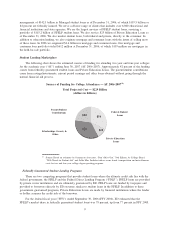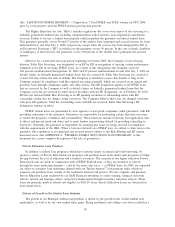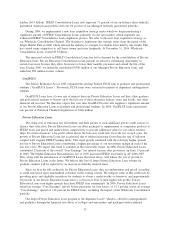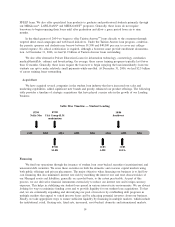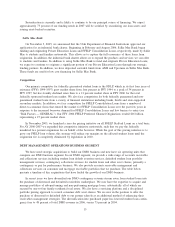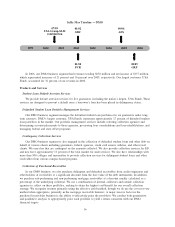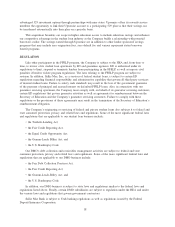Sallie Mae 2006 Annual Report Download - page 9
Download and view the complete annual report
Please find page 9 of the 2006 Sallie Mae annual report below. You can navigate through the pages in the report by either clicking on the pages listed below, or by using the keyword search tool below to find specific information within the annual report.BUSINESS SEGMENTS
We provide our array of credit products and related services to the higher education and consumer credit
communities and others through two primary business segments: our Lending business segment and our DMO
business segment. These defined business segments operate in distinct business environments and have unique
characteristics and face different opportunities and challenges. They are considered reportable segments under
the FASB’s SFAS No. 131, “Disclosures about Segments of an Enterprise and Related Information,” based on
quantitative thresholds applied to the Company’s financial statements. In addition, within our Corporate and
Other business segment, we provide a number of complementary products and services to financial aid offices
and schools that are managed within smaller operating segments, the most prominent being our Guarantor
Servicing and Loan Servicing businesses. In accordance with SFAS No. 131, we include in Note 18 to our
consolidated financial statements, “Segment Reporting,” separate financial information about our operating
segments.
Management, including the Company’s chief operating decision maker, evaluates the performance of the
Company’s operating segments based on their profitability as measured by “Core Earnings.” Accordingly, we
provide information regarding the Company’s reportable segments in this report based on “Core Earnings.”
“Core Earnings” are the primary financial performance measures used by management to develop the
Company’s financial plans, track results, and establish corporate performance targets and incentive compensa-
tion. While “Core Earnings” are not a substitute for reported results under generally accepted accounting
principles in the United States (“GAAP”), the Company relies on “Core Earnings” in operating its business
because “Core Earnings” permit management to make meaningful period-to-period comparisons of the
operational and performance indicators that are most closely assessed by management. Management believes
this information provides additional insight into the financial performance of the core business activities of our
operating segments. (See “MANAGEMENT’S DISCUSSION AND ANALYSIS OF FINANCIAL CONDI-
TION AND RESULTS OF OPERATIONS — BUSINESS SEGMENTS” for a detailed discussion of our “Core
Earnings,” including a table that summarizes the pre-tax differences between “Core Earnings” and GAAP by
business segment and the limitations to this presentation.)
We generate most of our earnings in our Lending business from the spread between the yield we receive
on our Managed portfolio of student loans and the cost of funding these loans less the provisions for loan
losses. We incur servicing, selling and administrative expenses in providing these products and services, and
provide for loan losses. On our income statement, prepared in accordance with GAAP, this spread income is
reported as “net interest income” for on-balance sheet loans, and as “gains on student loan securitizations” and
“servicing and securitization revenue” for off-balance sheet loans in which we maintain a Retained Interest.
Total “Core Earnings” revenues for this segment were $2.4 billion in 2006.
In our DMO business segment, we provide a wide range of accounts receivable and collections services
including student loan default aversion services, defaulted student loan portfolio management services,
contingency collections services for student loans and other asset classes, and accounts receivable management
and collection for purchased portfolios of receivables that are delinquent or have been charged off by their
original creditors as well as sub-performing and non-performing mortgage loans. In the purchased receivables
business, we focus on a variety of consumer debt types with emphasis on charged-off credit card receivables
and distressed mortgage receivables. We purchase these portfolios at a discount to their face value, and then
use both our internal collection operations coupled with third party collection agencies to maximize the
recovery on these receivables. In 2006, we began purchasing charged-off consumer receivables in Europe
through our United Kingdom subsidiary, Arrow Global Ltd.
LENDING BUSINESS SEGMENT
In our Lending business segment, we originate and acquire both federally guaranteed student loans, which
are administered by the U.S. Department of Education (“ED”), and Private Education Loans, which are not
federally guaranteed. Borrowers use Private Education Loans primarily to supplement guaranteed loans in
meeting the cost of education. We manage the largest portfolio of FFELP and Private Education Loans in the
student loan industry, serving nearly 10 million student and parent customers through our ownership and
8

